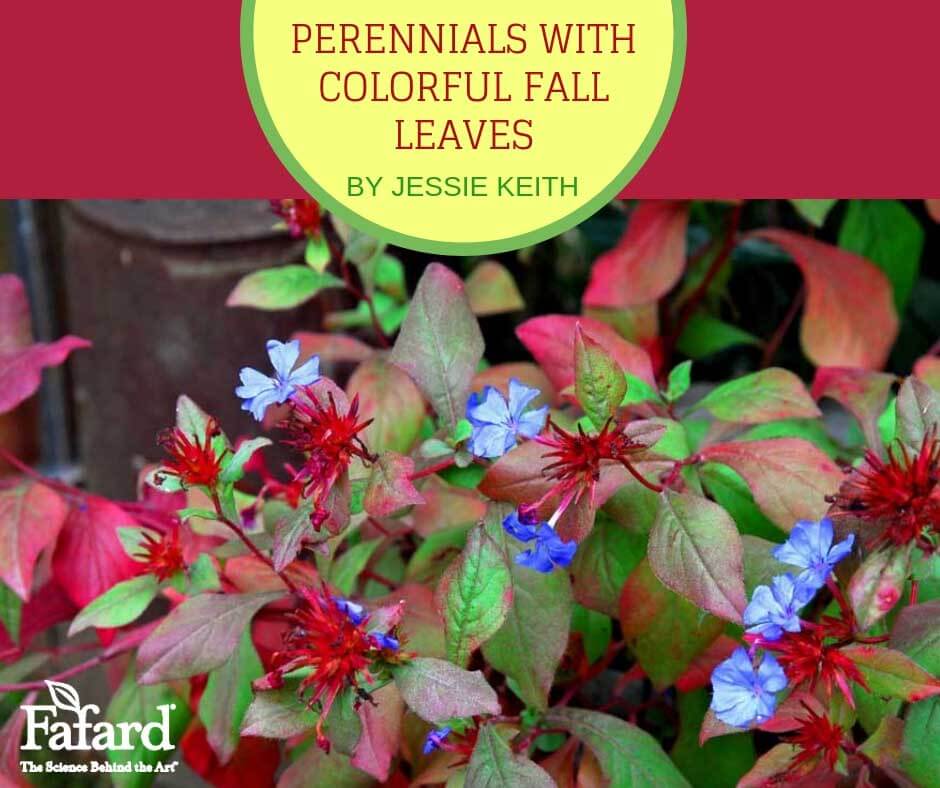

Of course, colorful trees produce the biggest show of fall, but it doesn’t have to end there. Lots of non-woody plants change color and pack just as big of a punch in a smaller package. Here are plants that you need if you want to electrify your waning garden with impressive shocks of perennial leaf color.
Perennials With Colorful Fall Leaves
Autumn Fern
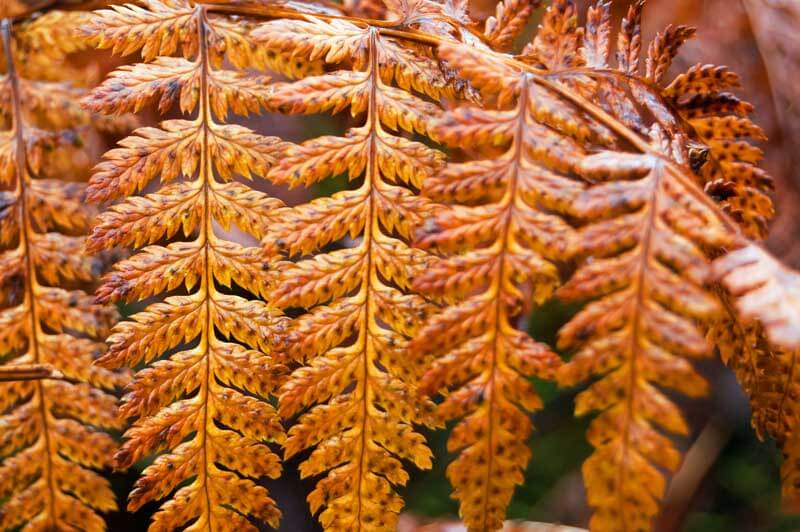
Autumn fern (Dryopteris erythrosora, USDA Hardiness Zones 5-8) is an attractive, vigorous fern from Asia that develops golden or russet-orange tones in fall. It is ideal for a shaded or partially shaded garden. The variety ‘Brilliance‘ is especially colorful with reliably bright orange fronds.
Autumn fern grows best in fertile, highly organic soil and reaches an average height of 2 feet when fully grown. Consider amending its soil with fertile Fafard Premium Natural & Organic Compost before planting.
Barrenwort
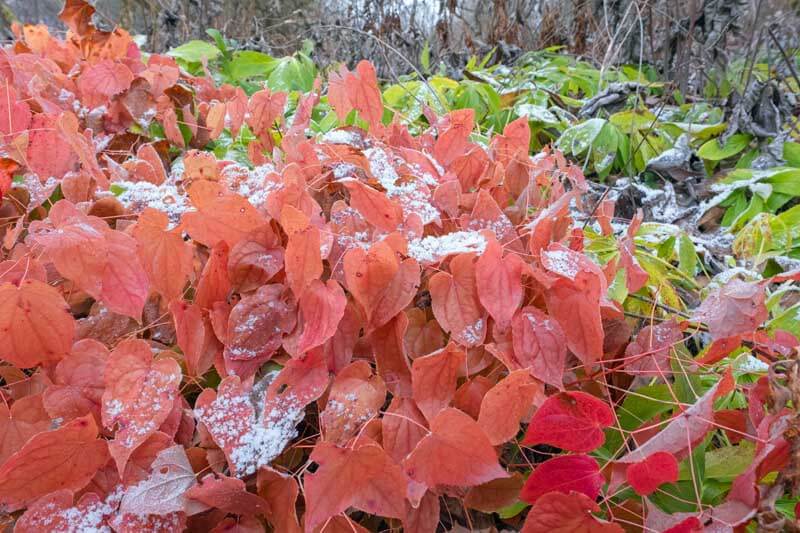
Known for remarkable deer resistance and tolerance to dry shade, deciduous or evergreen barrenworts (Epimedium spp.) offer more than delicate stems of spring flowers and attractive summer foliage. Many have fall leaves that turn the hues of the sunset. These are arguably some of the finest perennials for spectacular fall color. Most color up best if provided partial sun in summer, fertile soil, and average moisture.
The common yellow-flowered barrenwort (Epimedium x versicolor ‘Sulphureum’, Zones 5-8) produces pale-yellow flowers in spring and punctuates season’s end with orange-red leaves. Another variety with pale flowers of lavender is the compact Aurora barrenwort (Epimedium sempervirens ‘Aurora’, Zones 5-8), which has small, glossy, semi-evergreen leaves. When plants are grown in partial sun, they develop orange-red fall color.
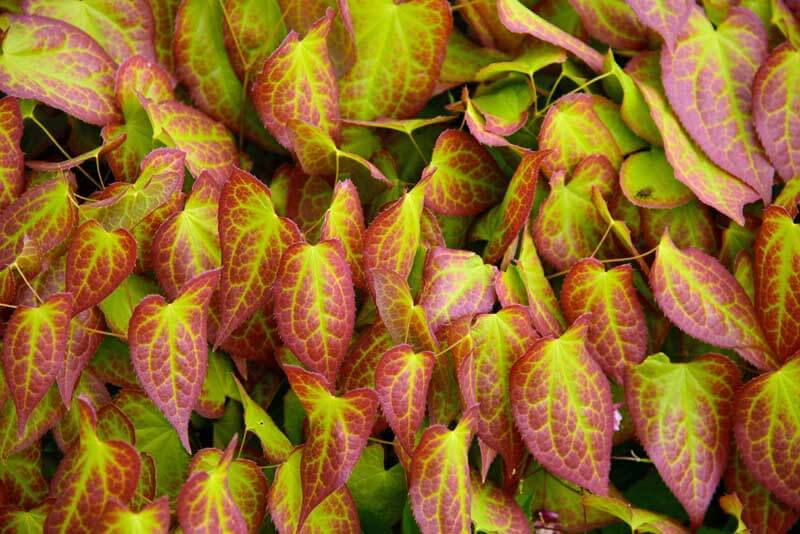
For bright color all season choose red barrenwort (Epimedium x rubrum, Zones 5-9) with its pendulous red and pale yellow flowers and reddish-purple fall leaves. Red Queen barrenwort (Epimedium grandiflorum ‘Red Queen’, Zones 4-8) is another option with large spring flowers of bright rose-red that are further beautified by a mound of very large 4- to 6-inch leaves. In fall, these turn shades of pinkish-orange with some red.
The well-named Thunderbolt barrenwort (Epimedium pinnatum ssp. colchicum ‘Thunderbolt’, Zones 5-8) has sunny yellow spring flowers and somewhat glossy, evergreen leaves. These turn dark purple or deepest mahogany-red with striking contrasting green veins that brighten in fall.
Bloody Geranium

Pink or magenta flowers appear on the bloody geranium (Geranium sanguineum, Zones 4-8), not red ones. Instead, the name comes from its mound of intricate palm-shaped leaves that turn orange-red or blood-red in fall. Plant them in full sun.
One of the better varieties is ‘Max Frei’ with its brilliant magenta flowers that appear in late spring and will rebloom if deadheaded. In fall, the foliage becomes a riot of red. Another is the pale-pink-flowered Striated bloody cranesbill (Geranium sanguineum var. striatum), which develops deep burgundy-red fall color.
Bluestar
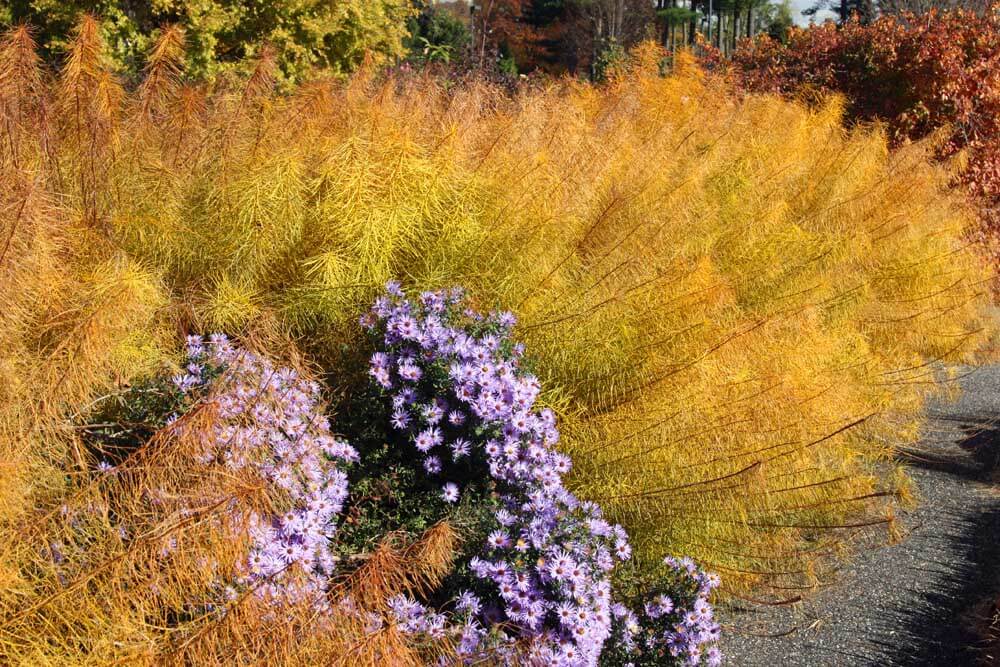
Bluestars (Amsonia spp.) are well known for their bright gold or orange fall color, but the elegant Hubricht’s bluestar (A. hubrichtii, Zones 5-9) takes center stage. Its clusters of palest blue, starry, late-spring flowers give way to flowing mounds of fine foliage. Then in fall, the whole large, fluffy plant turns to gold and orange. Plant this among late-blooming asters (Symphyotrichum spp.) for pleasing color contrast. It grows best in full to partial sun and average garden soil.
Plumbago
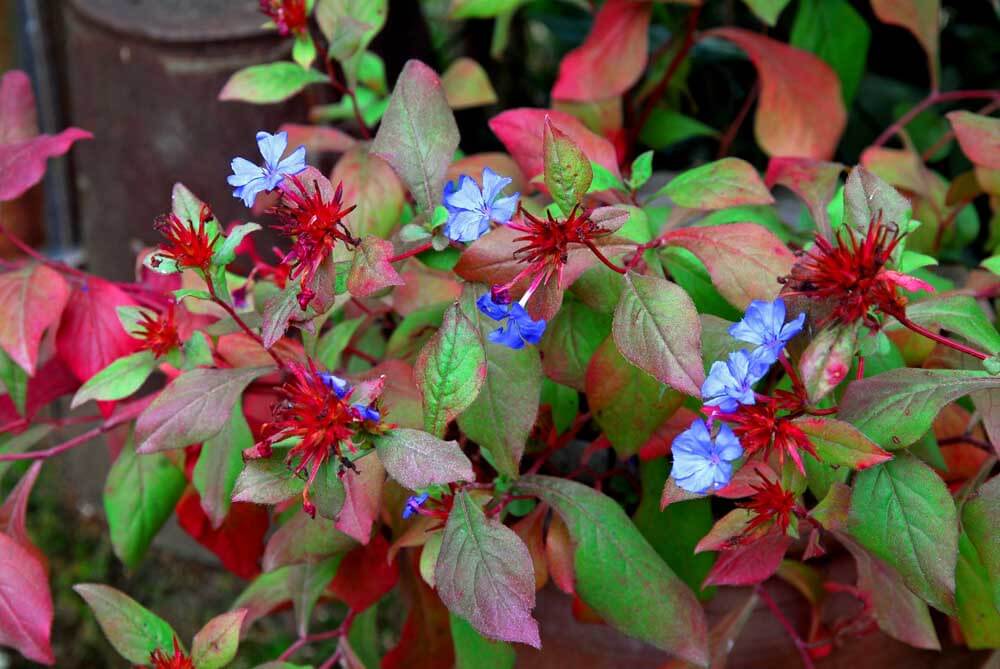
Plumbago (Ceratostigma plumbaginoides, Zones 5-9), is a rambling, low-growing groundcover with pretty, violet-blue flowers that bloom from summer to fall. As its leaves die back, they turn purple, red, and orange, especially if planted in partial sun.
The less common Chinese Plumbago (Ceratostigma willmottianum, Zones 6-9) forms a bushy, shrubby mound reaching 2 to 3 feet. It has the same beautiful, violet-blue flowers that begin blooming in summer and continue through fall. Its leaves consistently turn shades of deep magenta, crimson, and orange towards the end of the season.
Sedums and Sempervivums
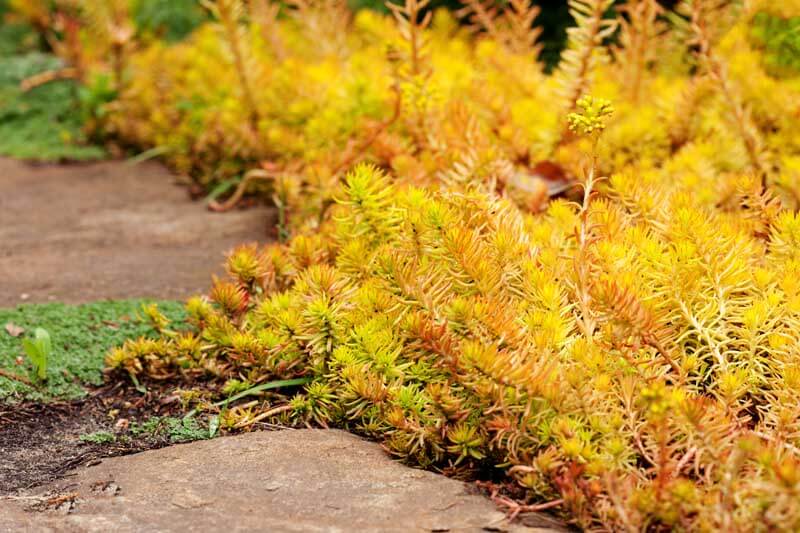
Some evergreen sedums have good fall color that is maintained through winter. Ground-hugging spreaders, such as the golden-orange-hued Sedum ‘Angelina’, which has spruce-like foliage that turns darker in fall and winter, and red-hued Sedum spurium ‘Dragon’s Blood’, which turns deep red in fall, make colorful additions to sunny border edges. Another that spreads to form an attractive mat is Sedum ochroleucum ‘Red Wiggle’, which has fine, spruce-like foliage that is red-green in summer and turns bright red in fall. All of these grow well in well-drained sunny spots or rock gardens and are hardy to Zones 4 or 5.
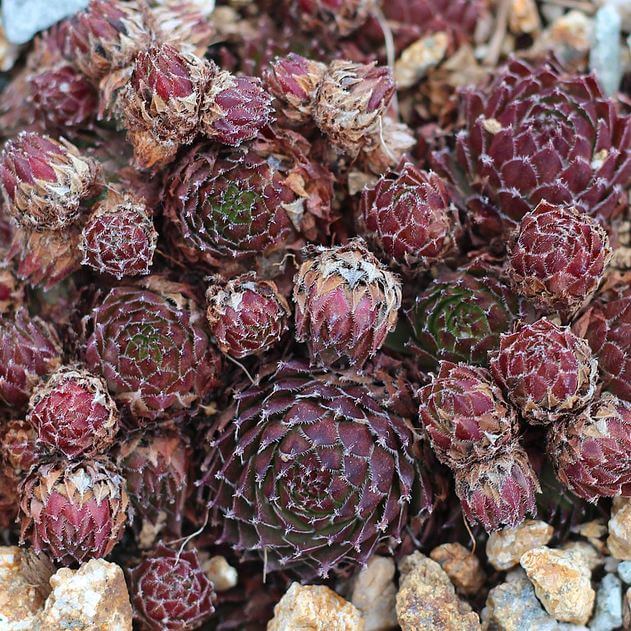
Sempervivum helveticum turns dark burgundy in fall and winter. (Image by Mountain Crest Gardens)
Hens-n-Chicks (Sempervivum spp.) are hardy, succulent, evergreens that form spreading clumps of ground-hugging rosettes. Some turn bright colors in fall. Try any of the red, burgundy, or silver-green varieties. These often darken in winter and remain evergreen and beautiful. Two to try are ‘Red Heart‘, which has large reddish-green rosettes that turn red in winter, and Sempervivum helveticum, which has fuzzy-edged rosettes with red tips. These turn dark burgundy in winter.
Grasses
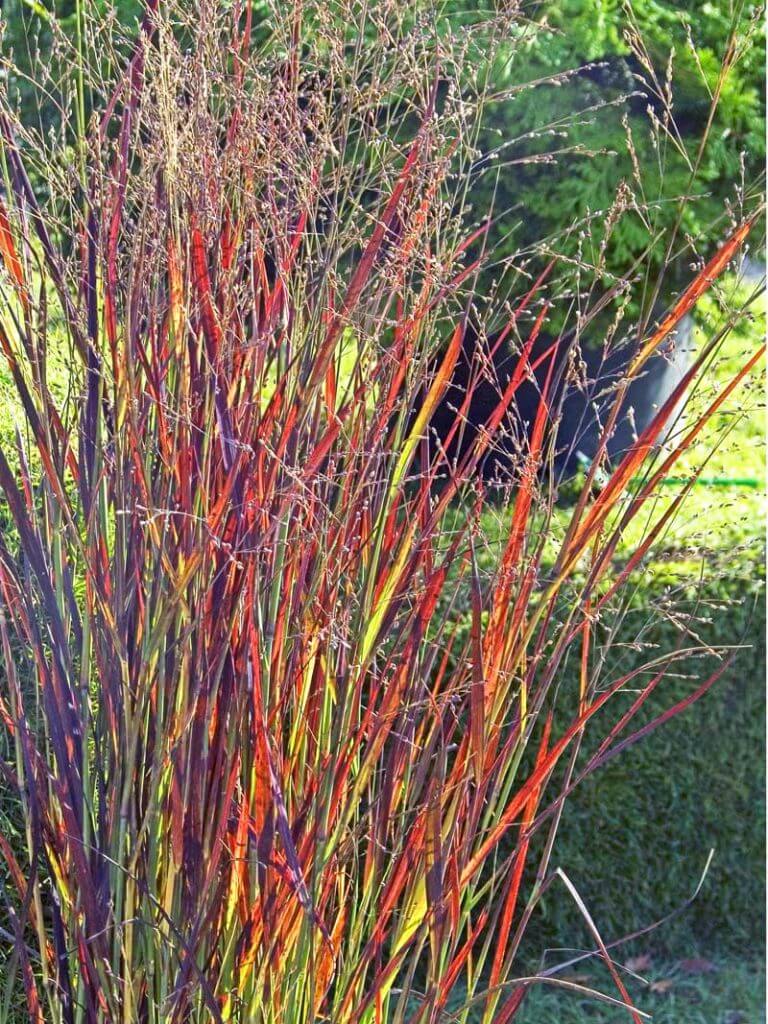
Switchgrass (Panicum virgatum ‘Shenandoah’, Zones 5-9) is a tall, clump-forming grass that reaches 3 to 4 feet. It has intermittent blades of reddish-purple through summer and develops airy seedheads by late summer. Then in fall, the whole clump brightens to red. The foliage then turns tan and maintains an attractive presence through winter. Give it average soil and full sun.
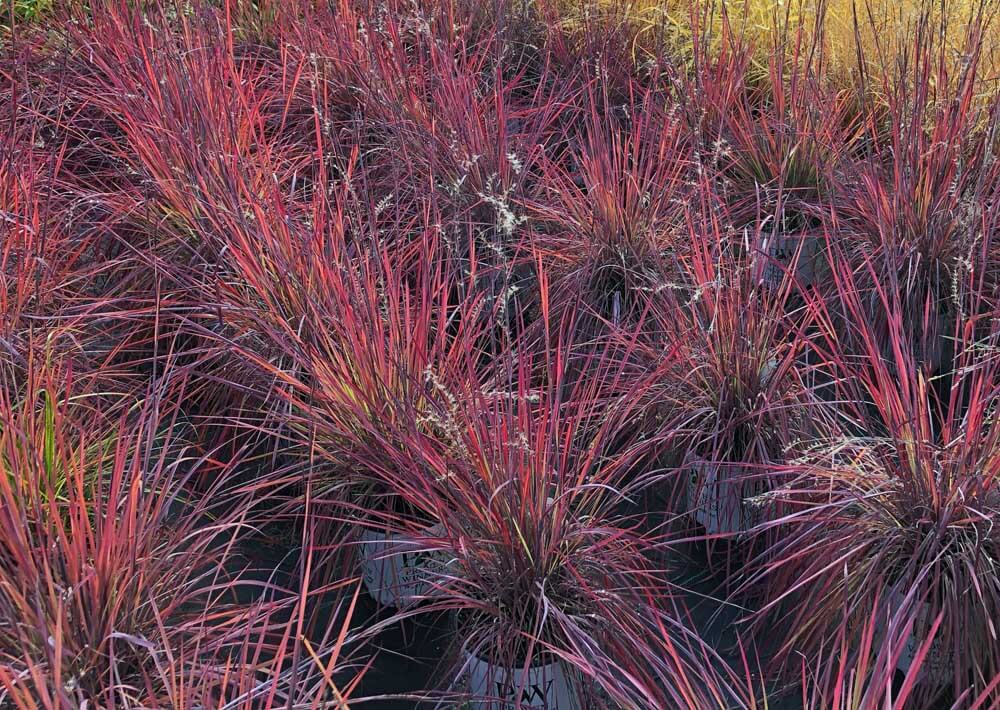
Prairie Winds® ‘Blue Paradise’ Little Bluestem (Schizachyrium scoparium ‘Blue Paradise’) is a tidy, upright, clump-forming grass reaching 4 feet. Its blades are blue-green through summer and turn burgundy-red in fall. Plant it in full sun and well-drained soil.
When your changing trees and garden perennials both show the prettiest fall colors, the garden looks that much better. Consider planting some of these garden beauties for next year’s end-of-season show.

